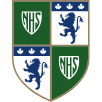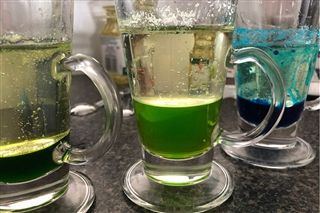Our Grade 6 scientists have been learning about mixtures in their latest unit on GO! Students in Ms. Ana Ver’s and Ms. Shawna Parks’ class are having fun with multiple demonstrations while learning the science behind them and experimenting on ways to improve them.
“We first did some knowledge building by doing some teacher-led demos so that we could learn the vocabulary,” said Ms. Ver. “Science is sometimes a lot like learning a new language, so why not have some fun with observing what these words mean.”
The teacher-led demonstrations allowed students to take part as they watched their teachers, as the materials were common and easy to buy. The three demonstrations include:
-
Suspensions: making loose leaf tea. Suspensions are heterogeneous mixtures where particles float freely throughout the substance. The particles can be filtered out, or they may settle to the bottom of the container.Emulsions: making lava lamps. Emulsions are a mixture of substances that are normally not mixable. Mayonnaise is an emulsion of lemon justice and oil, which normally cannot mix. The egg is added as an emulsifier because it has properties that are like water.Colloids: making butter. Colloids are homogeneous mixtures in which the component particles are very small, so the substance looks uniform throughout. However, colloids can easily be separated into their components.After watching the teacher-led demonstrations, the students had the chance to design their own experiments about mixtures, using some of the new concepts they had learned. The summative project was different from previous years where students usually create an art piece by experimenting with the creation of different pigments by changing one aspect of the process. But, Ms. Ver and Ms. Parks wanted to minimize any mess and stress on the parents so they were able to adapt the final project.Ms. Ver and Ms. Parks thank the parents, as they are a big part in helping these budding scientists.“Thank you to the parents who have willingly gathered materials and allowed their children to conduct experiments in their kitchens!” they added.





